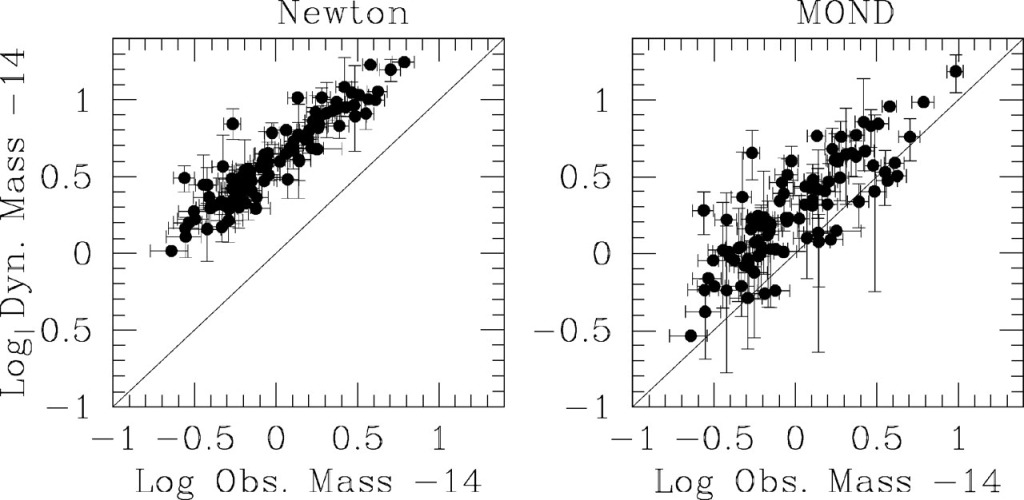
Some people have asked me to comment on the Scientific American article What if We Never Find Dark Matter? by Slatyer & Tait. For the most part, I find it unobjectionable – from a certain point of view.

Some people have asked me to comment on the Scientific American article What if We Never Find Dark Matter? by Slatyer & Tait. For the most part, I find it unobjectionable – from a certain point of view.
Who we give prizes to is more a matter of sociology than science. Good science is a prerequisite, but after that it is a matter of which results we value in the here and now. Results that are guaranteed to get a Nobel prize, like the detection of dark matter, attract many suitors who pursue them vigorously. Results that come as a surprise can be more important than the expected results, but it takes a lot longer to recognize and appreciate them.
Given recent developments in the long-running hunt for dark matter and the difficulty interpreting what this means, it seems like a good juncture to re-up* this: The history of science is a decision tree. Vertices appear where we must take one or another branching. Sometimes, we take the wrong road for the right reasons. A good example is the geocentric vs. heliocentric cosmology.

I want to take another step back in perspective from the last post to say a few words about what the radial acceleration relation (RAR) means and what it doesn’t mean. Here it is again: This information was not available when the dark matter paradigm was developed. We observed excess motion, like flat rotation curves, and inferred the existence of extra mass. That was perfectly reasonable given the information available at the time.

In the previous post, we discussed how lensing data extend the Radial Acceleration Relation (RAR) seen in galaxy kinematics to very low accelerations. Let’s zoom out now, and look at things at higher accelerations and from a historical perspective.

Flat rotation curves and the Baryonic Tully-Fisher relation (BTFR) both follow from the Radial Acceleration Relation (RAR). In Mistele et al. (2024b) we emphasize the exciting aspects of the former; these follow from the RAR in the Mistele et al. (2024a). It is worth understanding the connection. First, the basic result: The RAR of weak lensing extends the RAR from kinematics to much lower accelerations.

Last time, we discussed the remarkable result that gravitational lensing extends the original remarkable result of flat rotation curves much farther out, as far as the data credibly probe. This corroborates and extends the result of Brouwer et al. They did a thorough job, but one thing they did not consider was Tully-Fisher.

That rotation curves become flat at large radii is one of the most famous results in extragalactic astronomy. This had been established by Vera Rubin and her collaborators by the late 1970s. There were a few earlier anecdotal cases to this effect, but these seemed like mild curiosities until Rubin showed that the same thing was true over and over again for a hundred spiral galaxies.

This is an update to a post from a few years ago, which itself was an update to a webpage I wrote in 2008, with many updates in between. At that time, the goalposts for detecting WIMPs had already moved repeatedly. I felt some need then to write down a brief synopsis of the history of a beloved hypothesis (including by myself) that had obviously failed as the goalposts were in motion again. That was sixteen years ago.

A common refrain I hear is that MOND works well in galaxies, but not in clusters of galaxies. The oft-unspoken but absolutely intended implication is that we can therefore dismiss MOND and never speak of it again. That’s silly. Even if MOND is wrong, that it works as well as it does is surely telling us something.